 Dysbiosis: What is It and How to Heal Your Microbiome
Dysbiosis: What is It and How to Heal Your Microbiome
Are you experiencing stomach pains, gas, constipation, diarrhea, fatigue, brain fog, concentration difficulties, anxiety, pain, or other unexplained symptoms? The answer may be in your gut. Gut dysbiosis refers to microbiome imbalance that may develop as a result of various dietary, lifestyle, environmental, and health factors. Gut dysbiosis can lead to a variety of chronic symptoms and chronic health problems. Fortunately, once you identify the gut flora imbalance, you can address the root cause of your problems, improve your microbiome, and eliminate gut dysbiosis.
In this article, you will learn what dysbiosis is. You will understand the main symptoms and major causes of gut dysbiosis. I will explain the connection between leaky gut syndrome and gut dysbiosis. I will share the top home and lab testing strategies for gut dysbiosis and gut health, and offer my top natural support strategies for gut dysbiosis.
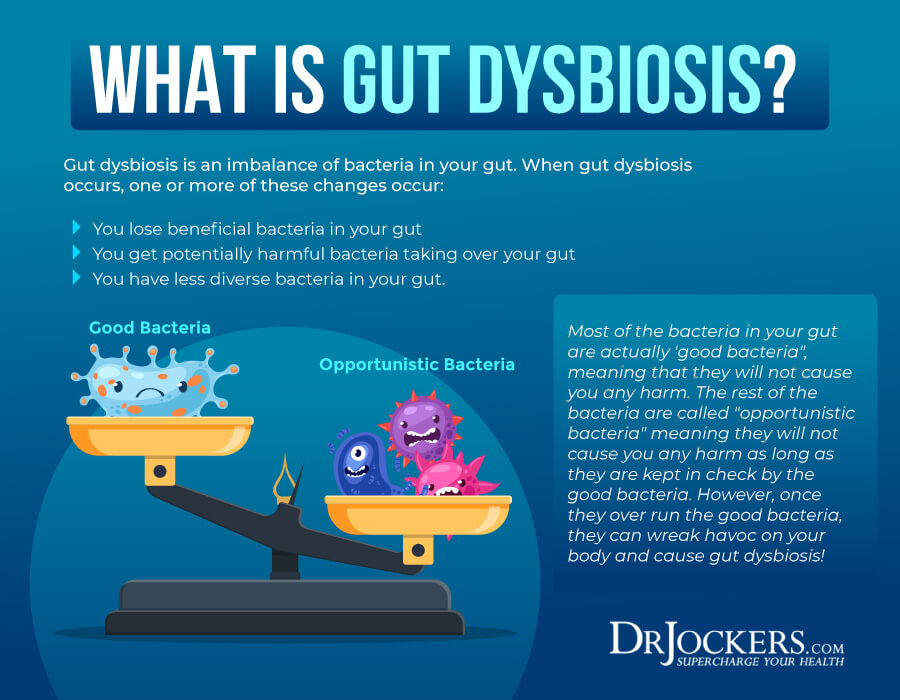
What Is Dysbiosis
When you think about your gut health, you have to consider the health of your microbiome. Your gut is full of bacteria. While many of these bacteria are healthy and contribute to your body’s natural processes, other bacteria are unhealthy and harmful. It is important that you have a healthy balance so your gut can provide a healthy foundation for a healthy body. You don’t want too many bad bugs in your gut.
When the bacterial colonies in your gut, including your stomach and intestines, are out of balance, you have gut dysbiosis. Gut dysbiosis may develop as a result of an unhealthy, inflammatory diet, food sensitivities, antibiotics, bacterial, yeast, or fungal overgrowth, poor bile flow, low stomach acid, chronic stress, anxiety, and a high toxic load. Some of the symptoms of gut dysbiosis are mild and temporary, such as an upset stomach, however, if you don’t address the problem and don’t correct the imbalance, things can get out of hand.
Gut dysbiosis can lead to more severe symptoms, inflammation, fatigue, chronic pain, and chronic health issues, including leaky gut syndrome, autoimmune conditions, fibromyalgia, thyroid issues, hormonal imbalance, poor immune health, diabetes, cardiovascular disease, neurological issues, cancer, and more (1, 2, 3, 4, 5, 6, 7, 8, 9, 10).

Major Symptoms of Dysbiosis
While many of the major symptoms of gut dysbiosis are gut or digestive issues, you may be surprised to learn that many symptoms are not digestive problems. Here are the major symptoms of gut dysbiosis:
- Upset stomach
- Nausea
- Constipation
- Diarrhea
- Bloating
- Gas
- Bad breath
- Vaginal or rectal itching
- Difficulty urinating
- Fatigue
- Trouble sleeping or insomnia
- Difficulties thinking or concentrating
- Brain fog
- Poor memory
- Anxiety, depression, or other mood issues
- Skin rashes or redness
- Chest pain
- Weight gain
- Changes in appetite
- Insulin resistance
- Headaches and migraines
- Muscle and joint pain
- Chronic pain
- Poor immune system

Dysbiosis and Leaky Gut Syndrome
Leaky gut syndrome refers to increased intestinal permeability. Your gut is semi-permeable. It’s designed to allow micronutrients to pass through to allow your body to absorb nutrients from food. It is also designed to keep infections, toxins, large food particles, and other harmful invaders out of your bloodstream.
However, when your intestinal wall gets damaged from inflammatory and processed foods and drinks, infections, environmental toxins, antibiotic overuse, chlorinated water, and stress, leaky gut syndrome happens.
These poor dietary, lifestyle, and environmental factors allow the pathogenic species, including harmful bacteria, Candida, and other fungi, parasites, and viruses to take over the control and compromise your health. These pathogens eat through your intestinal wall and create large gaps in your gut lining. This is called leaky gut syndrome.
If you have leaky gut, the tiny junctions on your intestinal wall become larger, and large gaps occur. This means that not only micronutrients but also toxins, undigested food particles, and microbes can pass through and escape into your bloodstream. These pathogens, toxins, and other harmful particles then travel through your bloodstream to lodge in your joints, neural tissues, and major organs, including your brain and liver.

Dysbiosis and Inflammation
When this happens, your immune system reacts by creating an inflammatory response in these areas. Unfortunately, this problem is not acute or temporary, but chronic, leading to chronic inflammation. Since the gaps in your gut lining are too large, they allow toxins and harmful particles to continue to pass into your bloodstream and pour toward other parts of your body, leading to a chronic inflammatory response and chronic inflammation.
Leaky gut and the chronic inflammatory response it leads to can destroy your joints, brain, and other organs. It ages your body rapidly and increases your risk of autoimmune conditions and other chronic health problems.
Dr. Alessio Fassano, a medical doctor, pediatric gastroenterologist, researcher, and an expert in the field of celiac disease, autoimmune disease, and bacterial pathogenesis, has dedicated much of his research to leaky gut syndrome, autoimmunity, and inflammatory conditions.
According to a 2012 study by Fassano and his team published in the Clinical Review of Allergy and Immunology, there is a link between leaky gut syndrome and autoimmune disease (11). According to a recent, 2020 follow-up study by Fassano published in the F1000 Research, leaky gut syndrome may be the underlying cause of all chronic inflammatory diseases (CID), including autoimmune, infective, metabolic, and tumoral diseases (12).

Major Causes of Dysbiosis
You may develop gut dysbiosis for a variety of reasons that are fairly understood in the research. The gut microbiome is very sensitive to chronic stress and inflammatory foods as well as pathogenic bacteria and parasites.
One of the most important things we can do to prevent dysbiosis is to keep our stress down, eat a healthy diet, and do our best to stimulate optimal stomach acid, bile flow, and pancreatic enzyme release. We will discuss more about this later in the article. Here are the major causes of gut dysbiosis:

Food Sensitivities
Food sensitivities are one of the major causes of gut dysbiosis. They are not the same as food allergies and often go unnoticed. Food allergies lead to immediate reactions in your body after eating a certain food, including hives, difficulty breathing, puffiness, or rashes. Food sensitivities are more subtle. They are also more difficult to recognize and may go unnoticed. Symptoms of food sensitivities often don’t appear until several hours or even a few days after eating a food you are sensitive to.
Common symptoms of food sensitivities include bloating, diarrhea, constipation, pain, fatigue, skin issues, and brain fog. When you are eating a certain food you are sensitive to regularly, your symptoms can become chronic and it can lead to microbiome imbalance and gut dysbiosis.
The most common food sensitivities include gluten, sugar, dairy, soy, eggs, corn, and nuts, but you may be sensitive to a less common food, including otherwise nutritious foods. To learn more about food sensitivities and how to identify them, I recommend reading this article.
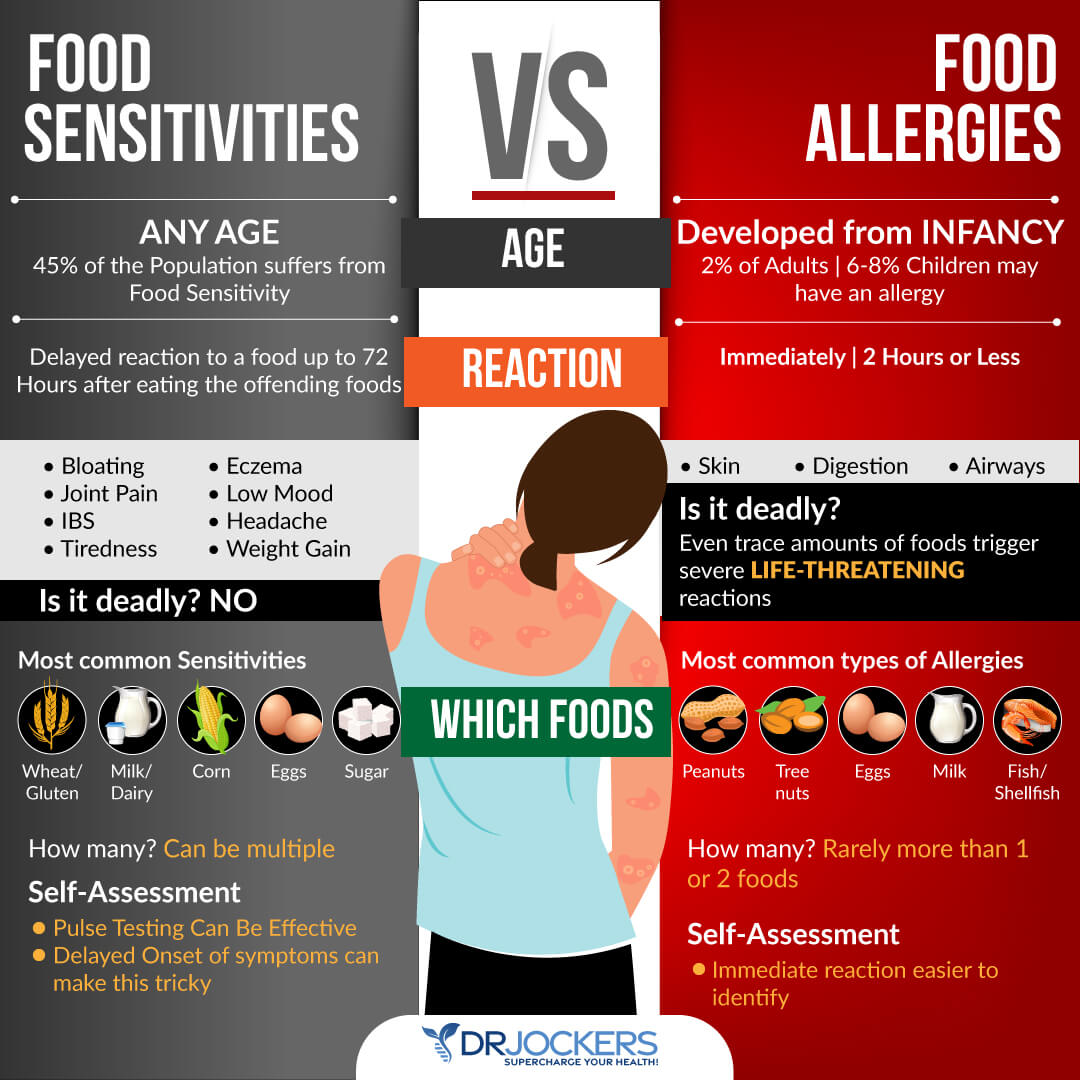
Low Stomach Acid
Hydrochloric acid or stomach acid helps to sterilize the food that is about to go into your gut. It also helps to break down protein. Having healthy levels of stomach acid is critical for optimal digestion and gut flora balance. Low stomach acid may happen due to a variety of reasons, including a poor diet, H pylori infection, stress, or antibiotic use. It can lead to gas, bloating, acid reflux, and other digestive problems characterized by gut dysbiosis.
Continuing to lead a lifestyle that creates low stomach acid feeds the vicious cycle of gut dysbiosis, poor digestion, gut microbial overgrowth, poor nutrient absorption, chronic gut inflammation, leaky gut syndrome, and increased stress hormones. To learn more about the symptoms and causes of low stomach acid, I recommend reading this article.

Poor Bile Flow
Bile is made up of cholesterol, bile salt, and bilirubin. It is a greenish-brown liquid that helps to emulsify fats to allow the breakdown and absorption of food in your small intestine. It also helps to pass waste products through your intestines so they can be released through bowel movements.
Healthy bile flow is absolutely necessary for your gut health. Poor bile flow can lead to poor fat absorption, malnutrition, blockages in your gallbladder, toxin accumulation, microbial overgrowth, and gut dysbiosis. It may cause abdominal bloating and other gastrointestinal symptoms associated with gut dysbiosis. To learn more about the importance of a healthy bile flow, I recommend reading this article.

Bacterial Overgrowth
Bacterial overgrowth is one of the main reasons behind gut dysbiosis and related symptoms. Helicobacter pylori (H. pylori) overgrowth is one of the main culprits. H. pylori is a corkscrew-shaped bacteria that can cause chronic gastritis, ulcers, stomach pain, bloating, and unhealthy stools (13).
Another common problem is small intestinal overgrowth (SIBO), which means that you have too many bacteria in your small intestine that shouldn’t be there in large amounts. SIBO is a common underlying cause of poor digestion, gas, bloating, cramps, food sensitivities, heartburn, leaky gut syndrome, inflammation, and other gastrointestinal issues (14). To learn more about the symptoms and causes of SIBO and natural support strategies for SIBO, I recommend reading this article.

Yeast or Parasite Overgrowth
Besides bacterial overgrowth, yeast, and parasite overgrowth can seriously disrupt your gut microbiome and cause gut dysbiosis. Candida is the most common yeast overgrowth you may experience.
In small amounts, Candida is necessary and beneficial for your body, however, in large amounts, it can lead to gut flora imbalance, abdominal bloating, gas, constipation, diarrhea, nausea, indigestion, headaches, yeast infections, fatigue, skin infections, depression, anxiety, and other symptoms.
Candida overgrowth is fed through an inflammatory diet that’s high in sugar, toxic overload, and an overall unhealthy lifestyle (15, 16, 17). To learn more about candida and yeast overgrowth, I recommend reading this and this article.
Parasites are microorganisms that can enter your body through contaminated food or drinks. It can lead to bloating, constipation, gas, diarrhea, digestive complaints, headaches, chronic pain, fatigue, depression, and other symptoms. Parasite overgrowth can lead to cravings, inflammation, and gut dysbiosis. To learn more about parasite overgrowth, I recommend reading this article.

Functional Digestive Health Testing
If you are experiencing symptoms of gut dysbiosis, there are a few functional digestive health testing methods that you can try to identify any underlying issues, such as low stomach acid or poor bile flow, from the comfort of your home.
There are several functional health tests, including blood and stool testing, I also recommend getting a clear picture of your health. Remember, identifying underlying issues and the root causes of your symptoms is a key step for an effective treatment strategy and recovery. Here are the functional digestive health tests I recommend:

Stomach Acid Testing
Poor stomach acid is one of the underlying causes of gut dysbiosis. You can test your stomach acid levels from the comfort of your home. Here are the stomach acid tests I recommend:
Steak Test
When trying the steak test for stomach acid, eat a steak all by itself. Notice how you feel over the next 3 hours of finishing the steak. If you feel tired, have gas, abdominal bloating, acid reflux, nausea, or other digestive symptoms, chances are, you have low stomach acid.
If you feel fine after eating the steak, you likely have optimal stomach acid levels. To make sure that you have optimal levels, try the baking soda or betaine HCL test as well.
Baking Soda Stomach Acid Test
For the baking soda stomach acid test, mix ¼ tablespoon of baking soda with 4 to 6 ounces of cold water. Drink this baking soda/water mix first thing in the morning before drinking or eating anything. Check the time before drinking it and the time of how long it takes for you to burp or belch after drinking the mix.
If burping or belching takes longer than 5 minutes, you probably have insufficient stomach acid. If you burp or belch very early or several times, you may have too much stomach acid. Small burps may happen from swallowing air from drinking too quickly.
If you notice small burps, you may try the test again another time. If it takes you 3 minutes to belch or burp, you may have low stomach acid levels. You may read more about the baking soda stomach acid testing strategy here. If you are still unsure, you may try the Betaine HCL test.

Betaine HCL Test
To perform the Betaine HCL test, get some Betaine HCL with pepsin, such as Acid Pro-zyme. Eat a high-protein meal with at least 6 ounces of meat. You may also eat veggies with this meal, just make sure that you have enough protein. Take your Betaine HCL pill in the middle of eating your meal.
Notice how you feel and watch your symptoms after your meal. If you don’t feel a difference, you may have low stomach acid levels. If you notice indigestion, burning, feeling hot, heaviness in your chest, or other digestive symptoms, you may have adequate stomach acid levels. Note that if you take the capsule too early before the meal, don’t consume enough protein, or have an esophageal sphincter dysfunction, you may get a false positive.
To avoid false positives, I recommend that you perform this test 2 to 3 times to make sure you have a true positive. You may also try the two other home tests and compare results If you get 3 positives or tested for low stomach acid with the other home tests, I recommend reading this article for tips on improving your stomach acid.

Bile Flow Testing
Poor bile flow is one of the underlying causes of gut dysbiosis. You can test your bile flow from the comfort of your home. Here are the bile flow tests I recommend:
The Fat Bomb Test
Performing the fat bomb test is simple. First, eat 2 to 3 of these chocolate fat bombs (they are delicious!). Watch your symptoms over the next 3 hours.
If you feel tired, have abdominal bloating, cramping, gas, nausea, acid reflux, pain, diarrhea, floating stool, or other digestive complaints, you may have poor bile flow. For further information, you may try reflexology or bile flow-supporting testing.
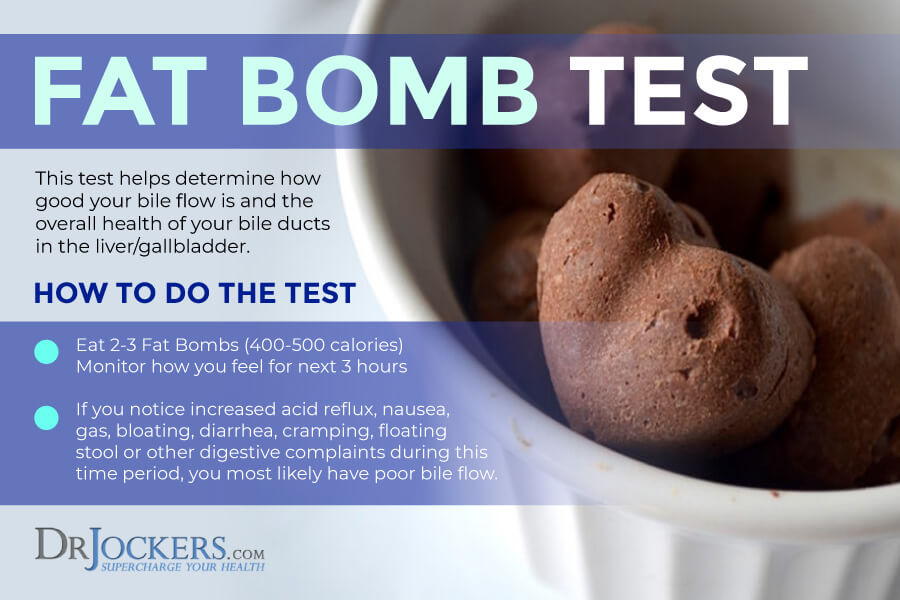
Reflexology and Meridian Centers
Using reflexology and testing your Meridian centers is a fantastic tool for bile flow testing. Chinese medicine has created a map of the body categorizing sections into a specific zone called Meridians to help repair, recovery, and health through reflexology, acupressure, and acupuncture.
Pain in any Meridian or trigger point may mean that you have energy stuck and not flowing due to a health issue. For this test, you have to check your gallbladder points, which include the web between your right thumb and forefinger, between your shoulder blades, across your Iliotibial band running from your buttocks to your foot into your 4th toe.
If you are experiencing pain or cramping in these areas, especially between 11 pm and 1 am when your gallbladder is the most active or between 1 am and 3 am when your liver is the most active, may mean that you have poor bile flow and/or poor gallbladder and/or poor liver function. For more information, you may try the bile flow support test.

Bile Flow Support Test
To perform the bile flow support test, take two capsules of the Bile Flow Support supplement after a higher fat meal.
Watch your symptoms to see how you feel after meals. If you feel better and have improved stools after taking Bile Flow Support, you may have poor bile flow.

SIBO Testing
SIBO is one of the underlying causes of gut dysbiosis. Signs of poor pancreatic enzyme secretion are typically associated with SIBO. You can test for poor pancreatic enzyme secretion and SIBO from the comfort of your home. Here are the SIBO tests I recommend:
The Broccoli Test
The broccoli test is simple and delicious. To perform this test, prepare and eat a big bowl of steamed broccoli. Watch your symptoms and see how you feel over the next 3 hours. If you have abdominal bloating, gas, cramping, acid reflux, or other digestive symptoms, it means that you may be experiencing signs of bacterial overgrowth and poor pancreatic enzyme function and may have SIBO. For further information, try the digestive enzyme test as well.
Digestive Enzyme Test
To perform the digestive enzyme test, all you have to do is take 2 to 4 digestive enzymes, such as Super D-Zyme with your meals and check your symptoms after your meals. If you feel better you may have poor pancreatic enzyme secretion, which means that you have SIBO.
Comprehensive Testing for Digestive Health
Home tests are simple and can help you understand your health better. They can help you to identify certain digestive health problems without seeing a professional. However, if you have digestive health troubles and symptoms of gut dysbiosis, further testing is highly beneficial. Here is what I recommend.
Comprehensive Blood Testing for Digestive Health
I recommend Comprehensive Blood Analysis to understand your digestive health problems, figure out the underlying issues causing your abdominal bloating and other symptoms, and find appropriate solutions to support your health. This test looks at your immune system function, blood sugar and insulin levels, inflammatory markers, liver, kidney, and urinary health, zinc, copper, folate, vitamin A, B12, and D levels, cardiovascular markers, and other markers to understand your overall health better.
This test can help spot underlying issues and help your functional health practitioner create an individualized plan for you. To learn more about this test, click here.
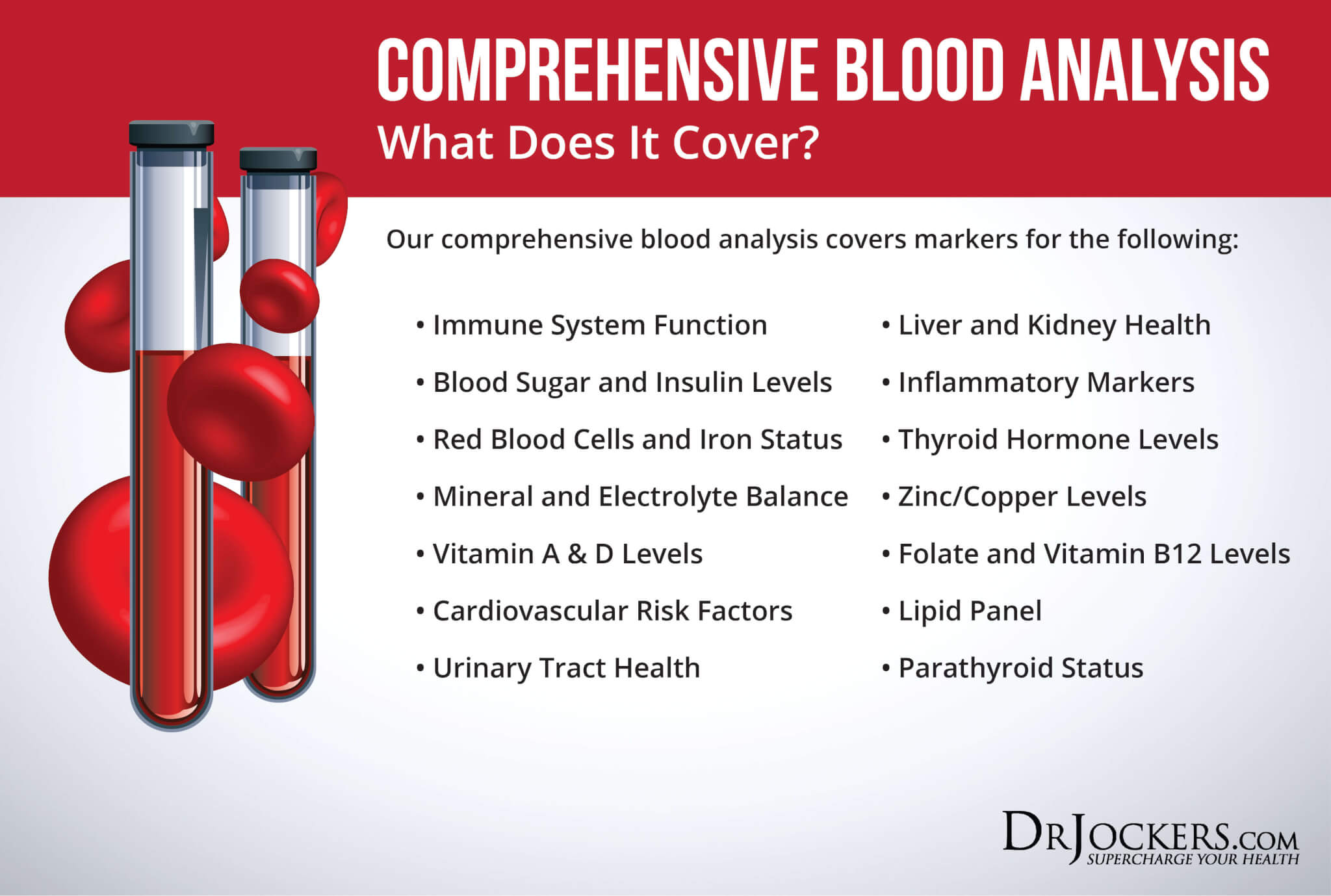
GI-MAP™ DNA Stool Analysis
The GI-MAP™ DNA Stool Analysis is the most comprehensive stool test I know and highly recommend it. This simple test can identify your levels of normal (healthy, good) and dysbiotic (bad, unhealthy) bacteria in your gut and measure bacterial imbalances. This test can also detect Candida and other fungi overgrowth, parasite (protozoa and worms) overgrowth, the presence of H. pylori, viral pathogens, viruses such as the Epstein Barr virus and cytomegalovirus, as well as autoimmune triggers.
This test is the only FDA-approved DNA test for gastrointestinal microbes and pathogens. It can reveal a lot about your health. It can reveal a lot about the health of your digestion and intestines and show markers of inflammation. Looking at these actionable biomarkers, we can find natural strategies to address your gut health issues and improve your health. To learn more about the GI-MAP™ DNA Stool Analysis, click here
SIBO Breath Testing
While the GI MAP is great for looking at the overall pathogen load in the body, it will not give us insight into the bacterial load in the small intestine. When we have too much bacteria in the small intestine, they ferment food we consume too quickly and can cause gas and bloating.
The diagnostic test for small intestinal bacterial overgrowth (SIBO) is through a breath test you can find here. You simply drink a sugar solution, breathe into a device several times over a period of 3 hours, and send in the test kit.
Organic Acid Test (OAT)
I also recommend the Organic Acid Test (OAT) for symptoms of gut dysbiosis and gut health issues. This test measures complex biomarkers from various metabolic pathways to check for metabolic dysfunction. Abnormal concentrations of organic acid give functional markers for metabolic effects of micronutrient inadequacies, intestinal bacterial overgrowth, enzyme deficiencies, toxic exposure, and neuroendocrine activity.
It allows us to check for bacterial and fungal overgrowth in your small intestines. This test will provide further knowledge to create the best personalized treatment plan for you. To learn more about the Organic Acid Test, click here.

Support Strategies for Gut Dysbiosis
Gut dysbiosis may develop due to a variety of dietary, lifestyle, environmental, and health factors. The good news is that you can employ some simple support strategies to improve your gut flora naturally.
Gut-Friendly Nutrition Strategies
It’s not surprising that using gut-friendly nutrition strategies is the most important step to address dysbiosis. Here is what I recommend: Begin with an elimination diet where you eliminate the most common food sensitivities such as gluten, refined sugar, vegetable oils, and dairy (other than butter) from your diet. Most people notice improvements within 2 weeks on an elimination diet.
If you don’t notice any improvements within 2–4 weeks, then consider the results of the at-home tests. If you do well on the steak test but not on the broccoli test, then it would be wise to follow the low-FODMAP or carnivore diet. If you did poorly on the steak test but did well on the broccoli test, then I would try the prebiotic-rich diet.
You will probably know within 2 weeks if the prebiotic-rich diet is helping or hurting. If you don’t see improvements within a week or two then try the low-FODMAP or even the carnivore diet (unless you did poorly on the steak test) and see if that improves things for you. Again, you should notice improvements within 2 weeks.
If you still aren’t getting improvements, then you can try the elemental or semi-elemental diet and support your digestive system the way I explain further in the article. At this point, it would be wise to work with a functional health coach to help you optimize your digestive health plan.

Try an Elimination Diet
As you’ve learned, food sensitivities are one of the major causes of gut dysbiosis. Trying an elimination diet is a simple yet effective strategy for identifying underlying food sensitivities. I recommend that you start your elimination diet by removing the following food groups from your diet: gluten, dairy, refined sugar, corn, soy, eggs, all grains, vegetable oils, shellfish, tree nuts, legumes, and nightshade vegetables.
You may remove any other foods that you suspect to be a trigger. Remember, even a tiny bit of food that you are sensitive to can be triggering, so it is important that you completely remove these foods. This means no cheating.
After a two-week elimination phase, introduce foods to your diet one by one. Make sure to eat a new food for two to three days and watch your symptoms. Using a food diary can be helpful at this stage. If you have symptoms from a new food, remove this food. Add a new food, notice your symptoms, and continue.
Some of these foods are highly problematic even if you don’t have a specific food sensitivity for them. Generally, I recommend that you remove highly inflammatory foods, such as gluten, refined sugar, vegetable oils, and conventional dairy from your diet for good. To learn more about how to do an elimination diet, I recommend this article.

Try a Prebiotic-Rich Diet
You’ve probably heard about the benefits of probiotics. But prebiotics are just as important for your digestion and gut microbiome balance. Prebiotics are specific dietary fibers that feed the good bacteria, or probiotics in your gut.
Prebiotic-rich foods include Jerusalem artichokes, leeks, onions, garlic, asparagus, dandelion, chicory greens, jicama, apples, and bananas. Make sure that you eat these and other prebiotic-rich foods regularly.
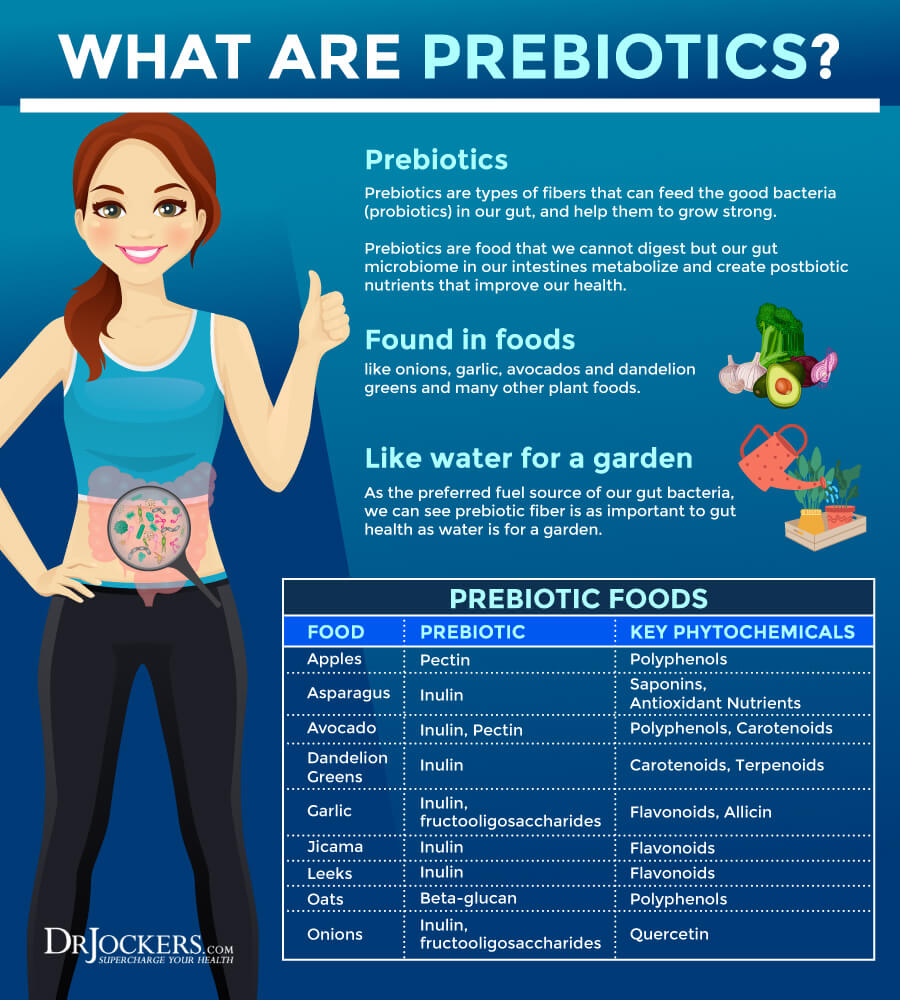
Try a Low-FODMAP Diet
The low-FODMAP diet is generally recommended for people with SIBO, but also for people with other digestive discomforts. If you have gut dysbiosis, and especially, if you have SIBO, trying this strategy may be very helpful.
Low-FODMAP vegetables include carrots, green beans, arugula, mint, basil, pepper, olives, pumpkin, cucumbers, zucchini, Swiss chard, lettuce, radishes, parsnips, sprouts, kale, collard greens, tomatoes, potatoes, and sweet potatoes. Low-FODMAP fruits include lemon, lime, strawberries, raspberries, blueberries, kiwi, grapes, papayas, melon, pineapples, and tangerines. Other low-FODMAP foods include egg, meats, fish, brazil nuts, chestnuts, butter, bone broth, seafood, quinoa, millet, rice, walnuts, and pinenuts. To learn more about the low-FODMAP diet, I recommend this article.

Try a Semi-Elemental or Elemental Diet
If you have a serious case of gut dysbiosis or gut health issues, you may try the elemental diet, which is a diet that uses nutritional formulas with pre-digested foods. These powders include vitamins, minerals, and complete macronutrients, and are used to replace all or some of your meals.
The elemental diet or a semi-elemental diet is often used for SIBO, Crohn’s disease, and eosinophilic esophagitis. A 2004 study published in Digestive Diseases and Sciences has shown that a 14-day elemental diet improved SIBO in 80 percent of cases. I only recommend this diet short term and with the guidance of your healthcare professional until you resolve SIBO (18).

Improve Vagus Nerve Function
Your vagus nerve is a very important yet rarely talked about nerve that extends from your brain stem through your neck into your chest and abdomen. Your vagus nerve connects your brain and gut. It is responsible for regulating your digestion, breathing, heart rate, blood pressure, and emotional state.
No wonder that if your vagus nerve is not functioning well, it can affect your digestion and gut microbiome health. According to a 2018 study published in Frontier in Psychiatry, improving vagus nerve function may play an important role in digestion, inflammatory disorders, and mental health conditions (19).
To improve your vagus nerve function, I recommend that you reduce your stress levels, improve your sleep, increase laughter and gratitude, practice breathwork, meditate, pray, connect with others, try cold water therapy, follow an anti-inflammatory nutrient plan, practice intermittent fasting, move your body, try movement therapies, stimulate your palatal muscles by singing, chewing, or gargling. I also recommend taking Zinc Charge, Brain Calm Magnesium, and Cortisol Defense. To learn more about your vagus nerve, I recommend this article.

Improve Bowel Motility
To improve your digestion and correct gut dysbiosis, improving your gut motility is critical. Proper hydration and electrolyte balance is your first step for bowel motility. Start your day with 32 oz of water and drink regularly throughout the day. You may set reminders on your phone if you tend to forget to drink.
Make sure to drink clean, purified water. Additionally, eat hydrating fruits and veggies, and drink green juices, green smoothies, or herbal tea. Remove dehydrating caffeine, sodas, alcohol, and sugary drinks. For electrolyte balance, add a pinch of salt to your water and eat mineral-rich vegetables.
For further bowel motility support, you may add more fiber and prebiotics to your diet. It is important that you know that while fiber and prebiotics are great for many, they can be difficult for others and cause diarrhea or constipation. Experiment to find the right amount of prebiotics and fiber that works best for you.
To support bowel motility and smooth bowel movements, magnesium is a helpful supplement. I recommend Oxy-Powder, a magnesium and oxygen-based colon cleanser. It improves bowel motility, prevents and relieves constipation, improves your microbiome balance, and removes toxins from your colon.
For optimal results, take it 2 hours away from any food or supplements. Average servings may vary between 4 and 10 supplements to produce 3 to 5 bowel movements a day for successful colon cleansing. Additionally, following my tips for vagal nerve function can also support better digestion and better bowel motility.

Try the Ileocecal Valve Massage
Your ileocecal valve connects your large and small intestines and acts as a barrier. It prevents the backflow of toxins. According to two 2014 studies published in Digestive Diseases and Sciences and the World Journal of Gastroenterology, ileocecal valve dysfunction may be associated with SIBO (20, 21). Ileocecal valve massage is a simple, and effective for digestion troubles, including bloating, gas, cramping, constipation, and diarrhea. It is a fantastic strategy for those with SIBO.
Follow these steps to practice ileocecal valve massage:
- Put your right thumb on your hip bone and your left thumb on your navel.
- The valve is located about halfway between your hip bone and your belly button. Imagine a line that connects these two points and find the middle between the two.
- Take all of your fingers and place them about 3 inches below that middle point. You should be very near your ileocecal valve.
- Press in this spot slowly but deeply and firmly. Search for the little tender hardened area. When you find it, you’ve found your valve. It may be easier to find it while lying down.
- Massage this spot in a circular motion with medium pressure for 10–15 seconds.
- Then come about 3 to 4 inches to the left of the IC valve, make a fist, and gently push from left to right to move contents through the small intestine and into the large intestine.
- After the massage, form your hand into a fist and stimulate the reflex located in the right front upper arm (close to your armpit) for 10 seconds.
To learn more about ileocecal valve massage, I recommend this article.
Intermittent Fasting
Intermittent fasting is a type of fasting that you can practice daily. It cycles between not eating (fasting) and eating (feasting) over a period of time. As I discussed in this article, intermittent fasting may help to increase cellular autophagy and cellular repair, lower inflammation levels, improve insulin sensitivity, improve immune regulation, and reduce the risk of chronic diseases. It supports your microbiome diversity and digestion. According to a 2006 study published in the International Journal of Behavioral Medicine, fasting can be beneficial for irritable bowel syndrome (21).
If you are new to intermittent fasting, I recommend you start with a Simple Fast which involves 12 hours of fasting, including your overnight sleep. Over time, you can slowly increase your fasting window to what works for you. Most people feel the best fasting for 16 hours a day with an 8-hour eating period. For women, Crescendo Fasting is usually the best choice. To learn more about the benefits of intermittent fasting and the best intermittent fasting strategies, I recommend this article.
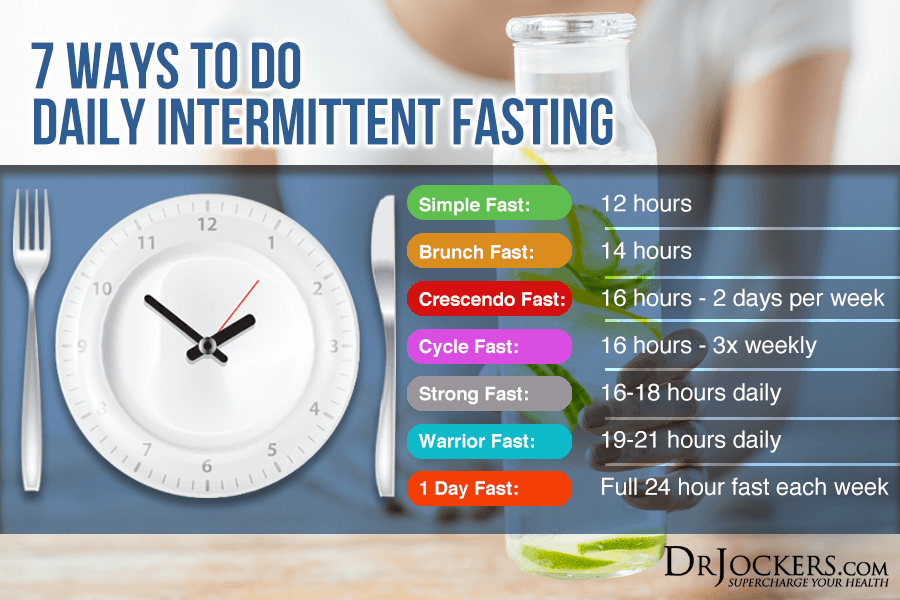
Test and Treat Gut Infections
Testing and treating gut infections is critical for your recovery if you have symptoms of gut dysbiosis. I recommend a GI Map Stool Test to understand your digestive health along with other tests we discussed earlier.
Your results will help to determine the appropriate lifestyle changes and supplementation you need for improved digestive health and gut microbiome balance. For Candida overgrowth, I recommend the Candida Support Pack, for parasite overgrowth, the Parasite Support Pack, and for SIBO, the SIBO Support Pack.

Support Stomach Acid and Bile Flow
Supporting your stomach acid and bile flow is very important for digestive and microbiome health. To reduce stomach acid, try Betaine HCL with meals. I recommend Super Digest HCL. This supplement is made with betaine hydrochloride (HCl), an excellent source of hydrochloric acid, dipeptidyl peptidase IV (DPPIV), lactase, an enzyme that aids the breakdown of lactose, “milk sugar”, and ox bile extract, and lipase to emulsify and digest fats and fat-soluble vitamins.
Take it regularly with your meals. Eating slowly and mindfully is also important to reduce symptoms of low stomach acid, support your digestion, and improve your symptoms.
I also recommend adding some herbs and other foods that support your bile flow, including dandelion greens, turmeric, ginger, milk thistle, parsley, cucumber, mint, radish, artichoke, cilantro, apple cider vinegar, green tea, and sauerkraut. For additional support, I recommend Bile Flow Support™.
This supplement is a great liver support formula that supports your body with nutrients involved in bile flow and fat metabolism, including choline, taurine, and methionine. Take two capsules twice daily after meals for optimal benefits.

Use Probiotics
Probiotics are incredibly important for your gut health. Probiotics are beneficial microorganisms that help to repair gut dysbiosis by rebalancing the gut flora with their healthy, gut-supporting presence (22, 23). Probiotic-rich foods include sauerkrauts, kimchi, kefir, kombucha, and yogurt.
While I recommend that you eat plenty of probiotic-rich foods, it is not enough to support your gut flora, especially if you are dealing with gut dysbiosis and gut health issues. Taking probiotics supplements daily is very important for your gut health. There are four types of probiotics you may use:
- Food-based probiotics, such as ProbioCharge
- Probiotic yeast, such as S-Biotic Flora
- Soil-based (SBO) probiotics, such as MegaSporeBiotic
- Combination probiotics, such as Ultimate Probiotic
Why are there so many different probiotic supplements, you may ask? That’s a great question. The reason is that not everyone deals with each of these probiotics the same. Depending on your body and health issues, one works better than others.
If you have SIBO, for example, soil-based probiotics (SBO) are the best choice as certain other probiotics may trigger your symptoms. SBO probiotics are generally the safest choice that works well for most and are usually helpful for beginners.
To determine which type of probiotic supplement works best for you I recommend trying each type of probiotic for 7 days each and monitor your symptoms and experience. You may also seek the guidance of a functional health practitioner, like myself.
It’s important that you rotate your probiotic brands every 1 to 3 months cycling between different probiotics that work for you to allow your gut to adapt and diversify your gut flora. To learn more about different types of probiotics, I recommend this article.

Use Carminative Herbs
Carminative herbs may be beneficial to your gut health (24). To improve gut dysbiosis and your gut health, I recommend using some carminative herbs including:
- Fennel: Fennel may improve your natural enzyme activity in your small intestine and lower any gut discomfort.
- Ginger: Ginger is an anti-inflammatory herb abundant in gut health benefits. It may reduce indigestion, bloating, belching, nausea, and other gut discomforts.
- Dandelion: Dandelion tea is a delicious tea that may ease abdominal cramping, upset stomach, indigestion, constipation, diarrhea, and other digestive discomforts.
- Gentian: Gentian may help healthy bile flow and provide relief for an upset stomach, abdominal bloating, and heartburn.
- Lemon Balm: Lemon balm may benefit your digestion and lower abdominal bloating, gas, and indigestion.
To enjoy the benefits of carminative herbs, I recommend Digestive Enzymes Chewable. This powerful supplement includes all these carminative herbs to support your digestion and help with bloating, indigestion, gut dysbiosis symptoms, and other gut health issues. Take it twice a day with meals for optimal support. To learn more about carminative herbs, I recommend reading this article.
Use Activated Charcoal For Immediate Relief
While following a healthy diet and lifestyle that supports your gut health and may serve as a preventative measure, sometimes you just need immediate relief for your symptoms of gut dysbiosis. For immediate relief, I recommend Activated Charcoal. It is one of the oldest detoxifying remedies that may provide relief from bloating and gas.
According to a 2012 study published in the Journal of Ultrasound, activated charcoal may be helpful for excessive intestinal gas (25). It also absorbs toxins to reduce symptoms of gut dysbiosis, such as digestion issues, fatigue, and brain fog, and to help cellular rejuvenation. Take two or more capsules with food for optimal results and digestive symptom relief. To learn more about the benefits of activated charcoal, I recommend this article.
Final Thoughts
Gut dysbiosis, or gut microbiome imbalance, is the common cause behind many chronic symptoms and health issues. Identifying gut dysbiosis and its causes is the first step to recovery and improved health.
Understanding gut dysbiosis can allow you and your healthcare practitioner to create a personalized plan and correct imbalances and underlying issues. Get tested for gut health issues and follow my tips for gut dysbiosis to improve your gut health, regain full-body health, and reclaim your energy, happiness, and vitality.
If you want to work with a functional health coach, I recommend this article with tips on how to find a great coach. On our website, we offer long-distance functional health coaching programs. For further support with your health goals, just reach out—our fantastic coaches are here to support your journey.
Inflammation Crushing Ebundle
The Inflammation Crushing Ebundle is designed to help you improve your brain, liver, immune system and discover the healing strategies, foods and recipes to burn fat, reduce inflammation and Thrive in Life!
As a doctor of natural medicine, I have spent the past 20 years studying the best healing strategies and worked with hundreds of coaching clients, helping them overcome chronic health conditions and optimize their overall health.
In our Inflammation Crushing Ebundle, I have put together my very best strategies to reduce inflammation and optimize your healing potential. Take a look at what you will get inside these valuable guides below!
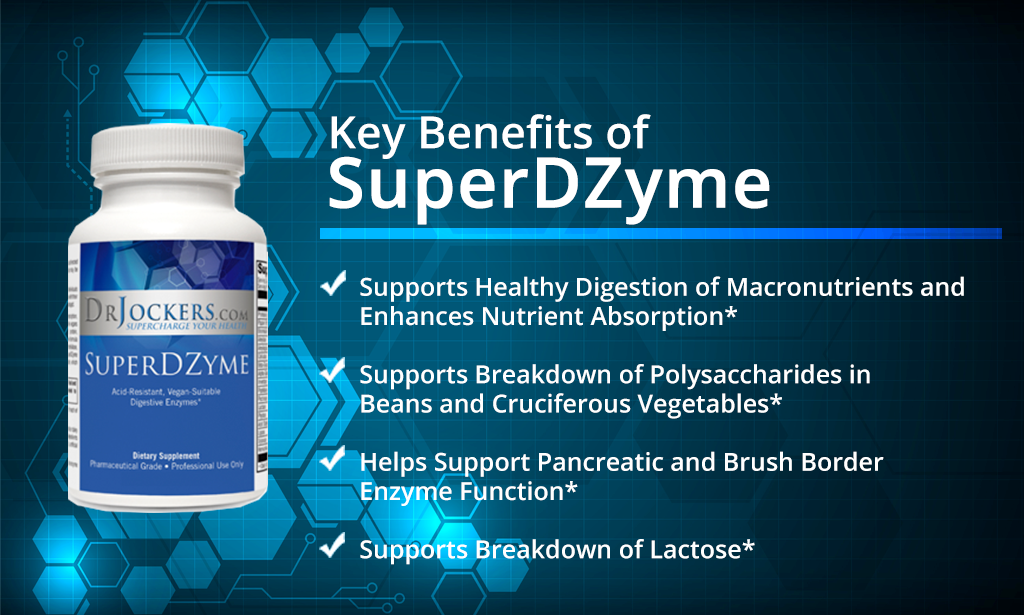











I learned a new thing about digestion. For the digestion and especially for the stomach acid not good the high PH water( alkaline), because the stomach acid supposed be low ph for good digestion. So because of that it’s recommended to drink destilled water.
Yes that is correct. You also want to make sure not to drink much around meal times or it will dilute your stomach acid levels.
My very wise Grandpa (who never learned to read or write) told me that 60 years ago! He’d never let us drink anything with our meals so not to dilute stomach acids.
Yes good advice Sharon!
Great article. Any pre and post biotics combination suppement you recommend?
Yes this is a good one: https://store.drjockershdg.wpengine.com/products/sbo-probiotics-gut-restore
Dr. Jockers,
I loved your detailed article. I am looking for answers for a friend. Fifteen years ago he had a severe burn in his mouth from grease on a pizza slice. Ever since then he has had an “autoimmune”, reaction to something as little as a cold. His body attacks his soft tissue throughout his body: mouth, eyes, nose, genitals. He was recently hospitalized for four days because he could no longer eat. He takes no meds but did have to this time in order to get back on his feet.
I have a feeling the burn created an oral dysbiosis which in turn caused gut dysbiosis. Maybe some immunilogical memory playing a role. I don’t know, but I’m sure that oral burn is key to the answer.
Do you have some thoughts for me?
Sincerely,
Nancy
Your blog has become my go-to resource for gut health. The practical advice you provide has made a huge difference in my daily routine.
Just noting that the dosage for the baking soda is in teaspoons (tsp) and not tablespoons as is written just before the graphic. Hope the editors fix this.